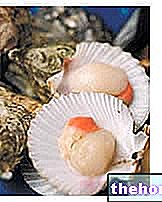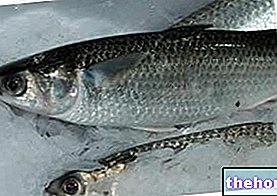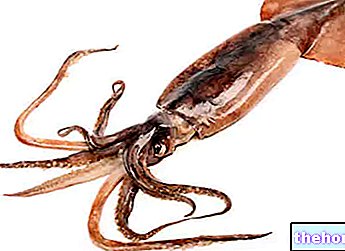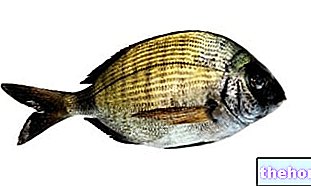What is the Paranza?
The paranza is a dish based on fried fish; for this reason, it has a rather high lipid and caloric intake.

The paranza is a typical dish of the diet of fishermen who, following the capture and sale of the finest fish, usually consume as much as possible the advanced specimens; it goes without saying that the paranza constitutes a mainly indirect method of earning, even if, nowadays, it is well present on all Italian tables. Ultimately, even though it is fish, the trawl offered for sale "should" enjoy an extremely low cost, even if you often come across mixed salads containing valuable species and therefore much more expensive than the ordinary.
The paranza should not be a primary objective of professional fishing, but a side effect of some fish traps (especially nets). It is no coincidence that large quantities of paranza are obtained from the "trawl" method which - in order not to spare mantis shrimp, prawns, scampi etc. - makes use of nets with rather thin meshes (to a lesser extent from small mail and pots). Unfortunately, the trawl in itself constitutes a rather DESTRUCTIVE picking technique, as it devastates the seabed it runs through, on which, moreover, the underwater creatures build their own breeding nests; furthermore, considering the small size of the aforementioned meshes, it is logical to deduce that it is not only small species that remain trapped, but also those that could reach a medium or large size. Obviously, the latter end up in the paranza even before having completed even a single reproductive cycle.
Ultimately, the paranza can be considered a useful preparation for the disposal of small and not very valuable fish, even if, as we have seen, it is not possible to carry out a real selection fishing with the trawl.
Fish species in the paranza
In the paranza there are many fish species, as many as there are leftovers or unforeseen catches during fishing. Some examples are: mullet (mud and rock), moles, sole, flounder, anchovies, lattarini, gobies, small mullets, gallinelle, boghe, salpe, horse mackerel, garfish, scarrani, damsels, damselfish, thrushes, lappere, sparaglioni, small white breams etc. Among these, some would still remain small in size and others could develop further.
Sometimes the more expensive paranza is enriched with cubes of large fish, crustaceans and molluscs.
Preparation of the paranza
The paranza is a second course that is easy to prepare. It is a fried dish in which it is essential to uniform the sizes; in practice, it is a good idea to make sure that all fish are the same size. Otherwise it would be necessary to cut the largest specimens.
First, if possible, fish should NOT be rinsed in fresh water. Then, based on tastes and species, it is also possible to decide whether to eviscerate them or not. While the oil is brought to temperature (preferably extra virgin olive oil or peanut), flour the fish taking care to separate the excess dust. With the oil at temperature and the freshly floured paranza, dip a little at a time and fry until it reaches a crunchy consistency and an approximately blond (not brown) color. It is essential that the oil never loses its optimal temperature. and that it does not exceed it, in order to avoid that the fried food is too greasy or that the oil goes beyond the smoke point, giving rise to compounds that are "not entirely healthy". Finally, fish for the cooked paranza with a spider coils and dab it with absorbent paper; then, add salt and possibly season with a little fresh lemon juice. The paranza must be served hot and eaten if possible without discarding the bone and the head.
Nutritional properties
It is not possible to make a precise estimate of the chemical and nutritional components of the paranza, as its composition is extremely variable.
Certainly, since it is a fried food, it will be high-calorie (due to the lipids of the oil), therefore not recommended in the diet of the overweight subject. Furthermore, while initially containing essential fatty acids of the family ω3 (of fish) and ω ‰ 6 (peanut oil), we remind you that the temperature necessary for frying drastically reduces their concentration in the food. Moreover, even if significant percentages remain. , the overall caloric intake would in any case make it unsuitable in the diet against metabolic diseases.
In addition to fats, the paranza contains good amounts of high biological value proteins (from fish) and a small amount of carbohydrates (from flour). Among the vitamins there should be several exponents of group B and D, even if many negatively suffer the inhibitory effect of cooking. As for the mineral salts, they are all present in good quantities, with excellent amounts of calcium (but only in case you eat small fish - anchovies and lattarini - whole, or with the bone).
Fish, Molluscs, Crustaceans Anchovies or Anchovies Garfish Alaccia Eel Lobster Herring Lobster Whitebait Bottarga Sea bass (Sea bass) Squid Canocchie Scallops Canestrelli (Sea scallops) Capitone Caviar Mullet Monkfish (Monkfish) Mussels Crustaceans Dates Sea Fruits Fish Flour Fauna Fish stock Prawns Crabs Spider crab (Granceola) Halibut Sea salad Lanzardo Leccia Sea snails Prawns Cod Molluscs Octopus Hake Ombrina Oysters Sea bream Bonito Pangasius Paranza Anchovy paste Fresh seasonal fish Blue fish Puffer fish Swordfish Plaice Octopus (Octopus) Hedgehog of Sea Amberjack Salmon Sardines Sardines Scampi Cuttlefish Mackerel Sole Stockfish Surimi Sushi Telline Tuna Canned tuna Mullet Trout Fish roe Bluefish Clams OTHER FISH ARTICLES Categories Alcoholic Food Meat Cereals and derivatives Sweeteners Sweets Offal Fruit Dried fruit Milk and derivatives Legumes Oils and fats Fish andpeach products Salami Spices Vegetables Health recipes Appetizers Bread, Pizza and Brioche First courses Second courses Vegetables and Salads Sweets and Desserts Ice creams and sorbets Syrups, liqueurs and grappa Basic preparations ---- In the kitchen with leftovers Carnival recipes Christmas Light diet recipes Women's, mom's and dad's day recipes Functional recipes International recipes Easter recipes Celiac recipes Diabetic recipes Holiday recipes Valentine's Day recipes Vegetarian recipes Protein recipes Regional recipes Vegan recipes




























